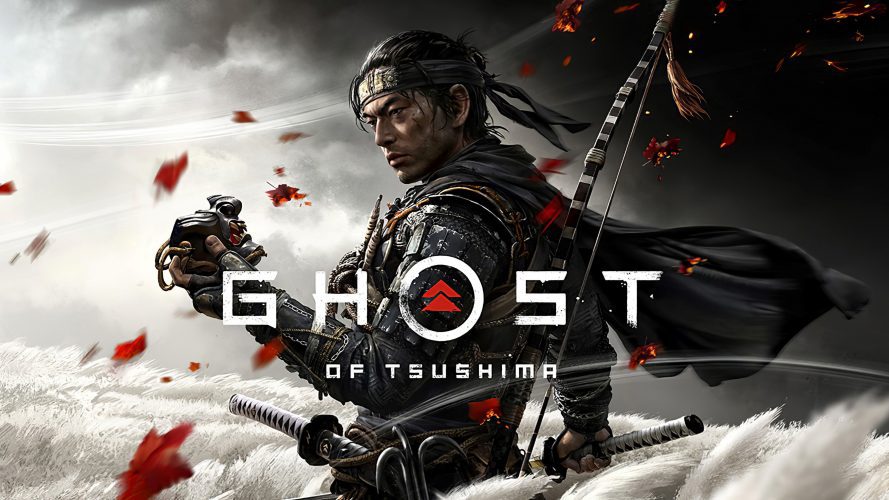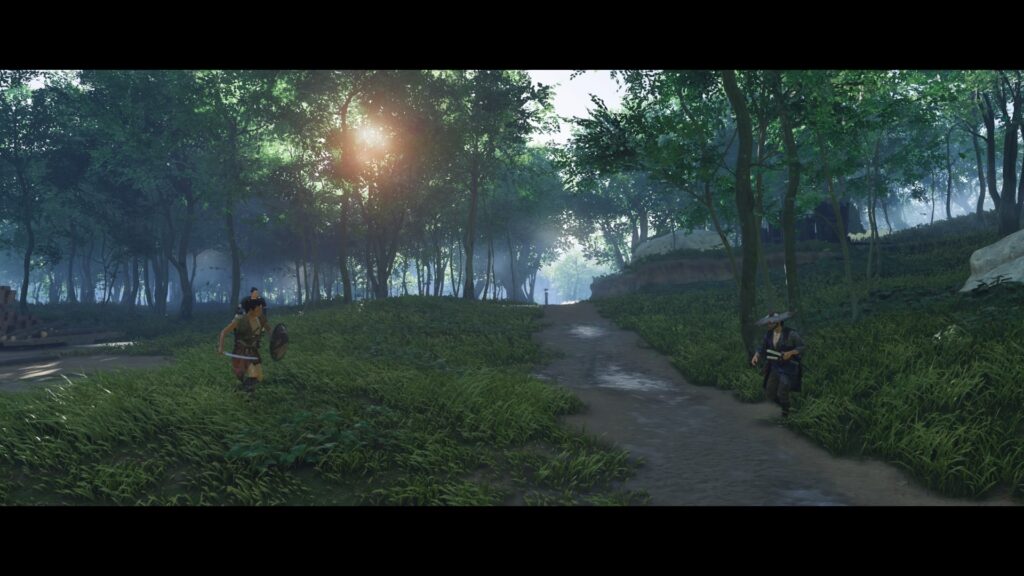
⭐ Games that receive this star have a score of 95% or above. This is purely from a game design perspective and is not in any way related to our morality evaluation.
Sucker Punch envisioned Ghost of Tsushima as a samurai game. Set in 13th century Japan amidst a Mongol invasion, the player takes the role of young samurai Jin as he strives to liberate the people of Tsushima. Inspired heavily by classic samurai films (there is even a Kurosawa display mode that renders the game in a gorgeous black and white film grain), Ghost of Tsushima is a powerful, epic experience. The Japanese countryside is beautiful, with bright golden leaves blanketing the forest paths, shallow rivers burbling over rounded stones, firm mountains, and swaying grasslands. The map is dotted with quaint villages, hot springs, beautiful castles, and hidden shrines. It is a game that grapples with the meaning of honor and duty. It is a world occupied by stoic warriors, silent assassins, and relentless villains. Sucker Punch envisioned Ghost of Tsushima as a samurai game. It is THE samurai game.

Before discussing the gameplay itself, a note on the story elements. I have not completed the campaign as of publication, but the narrative so far is excellent and the characters well done. Jin is a solid protagonist; he is not flawless (and therefore shallow), and he must deal with both the Mongols and his own inner conflict. The voice acting is top notch, and the cutscenes are paced to avoid becoming a burden. The story most definitely helps to immerse the player without inhibiting the flow of the game.
And the game itself is a perfect example of a modern, open world action/adventure title, with some extra stealth elements. Anyone who is a fan of Horizon Zero Dawn or the recent Assassin’s Creed games will feel quite at home playing Ghost of Tsushima. However, what really makes Ghost shine is that it takes the elements of the genre, further refines them, and polishes them. Sucker Punch has subtly tweaked the formula in a way that really allows the player to experience being a samurai in feudal Japan.
For example, one arguably distracting component of these games is the compass or minimap. Navigation markers frequently occupy the periphery. While Ghost of Tsushima’s map and ubiquitous markers are but a click away in the menus, they are not visible on the screen during normal gameplay. Instead, the player is guided to the active quest location via the wind. Streams of air and leaves will blow in the direction of the goal, and the player can swipe up on the touchpad to summon an additional gust, if necessary. Silent samurai, ever floating on the winds, the winds of justice…the haiku almost writes itself.

Another example is crafting. In Horizon Zero Dawn, for example, the player collects wood and resources and whatnot, which can be used to craft weapons and upgrades. Some of the crafting can be done in the field by Aloy herself, such as arrows. Convenient, yes, but for a game that seeks a feel of historical immersion, not terribly accurate. In Ghost of Tsushima, you will need to take the resources to the appropriate craftsman, such as a swordsmith, armorer, or bowyer. I did not find this mechanic overly wearisome, but instead the limitations enhanced the experience of carrying out missions in the field.
This is not to say that Sucker Punch has ignored niceties for the player. Any settlement that has been discovered is automatically accessible via fast travel. Oh, and the fast travel load times? They are fast. Very fast. I am playing Ghost on a regular PS4, and I am not in any way discouraged from utilizing the feature for fear of an interminable loading screen. Thank you, Sucker Punch.
The combat is challenging without being painful. No, this is not Sekiro, so no need to fear a Souls experience. The basic swordplay consists of block/parry, dodge, quick attack, and heavy attack. Jin also gains the ability to use a quickfire weapon as well as a ranged weapon. Fighting with the katana is satisfying, and as the player progresses new abilities are unlocked that truly make Jin feel powerful. A parry followed by a slow-motion killer deathblow. Sidestepping a spear thrust and then counter-attacking. New abilities are unlocked by defeating Mongol leaders and completing tales (which are what Ghost of Tsushima calls quests). A little variety to the combat is added by allowing Jin to switch stances on the fly–the same button combination will have a different effect depending on Jin’s fighting stance. The water stance, for example, is effective against shield-carrying enemies, as holding and releasing triangle will allow him to knock the shield away and open the enemy for further attacks. In the stone stance, however, holding and releasing triangle performs a stabbing thrust. Progression is paced nicely, and the player has the freedom to tailor Jin to his or her playstyle. Again, the skill tree mechanic will be very familiar to anyone with experience in open world action/adventure games, although Ghost of Tsushima’s skill tree can be a little overwhelming. It spans multiple menu pages, and it is somewhat daunting to decide exactly where to spend skill points.
Ghost of Tsushima does boast some unique elements that really enhances the samurai experience. Nearing a town, the player can challenge the enemies to a standoff, and the player enters a quick-reaction minigame. It is the samurai version of the Old West quick draw on a dusty road. Win, and the first enemy is eliminated before the ensuing fight. Lose, and Jin starts combat at a health disadvantage. It is very cool and sets the perfect tone for the game, although I found myself avoiding it at times in lieu of the stealth tactic. There are other elements that I thought were clever, such as using “resolve” for regaining health, but in the interests of brevity I will simply salute Sucker Punch on the masterful way that gameplay and setting are interwoven.

Ghost of Tsushima is a fantastic single-player experience, most definitely a contender for game of the year, and a perfect sendoff for the PlayStation 4 era.
Scoring: 96% ⭐️ (EXCELLENT ACTION/ADVENTURE GAME)
Graphics: 5/5
Story: 5/5
Controls: 5/5
Gameplay: 5/5
Replay-ability: 4/5
Morality/Parental Warnings
Ghost of Tsushima is a very violent game. The enemies are not cartoony aliens, but humans. There are many intensely graphic execution scenes, including stabbings and decapitations. It is most definitely not for children. Ghost of Tsushima is not glorifying the violence for the sake of violence, but the game is ultimately a historical epic during a war between samurai and Mongols, and this reality is not sanitized.
Additionally, as a historical epic the game does contain elements of the Shinto and Buddhism, the two primary religions of Japan during the game’s setting (and well before the introduction of Christianity). Characters may make references to their particular faiths, for example. Additionally, the player may encounter shrines that will require interaction: after pressing a button to “honor the shrine”, Jin will pray and gain a small stat boost or item.
As of publication, I have not encountered any scenes involving the sexual act, but there are brief scenes of nudity from behind as Jin enters a hot spring. These are rooted in Japanese culture, and the scenes are not gratuitous.
